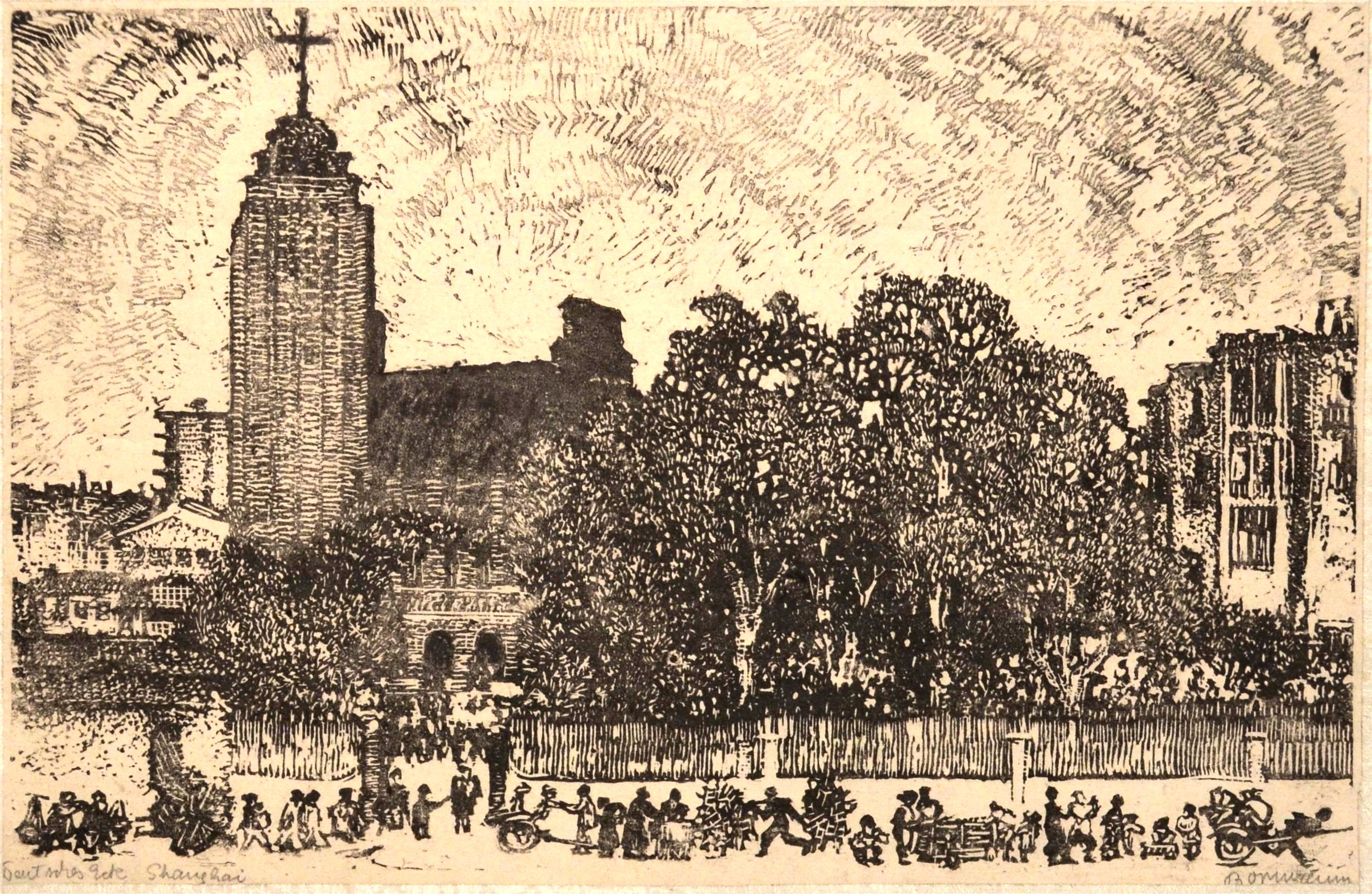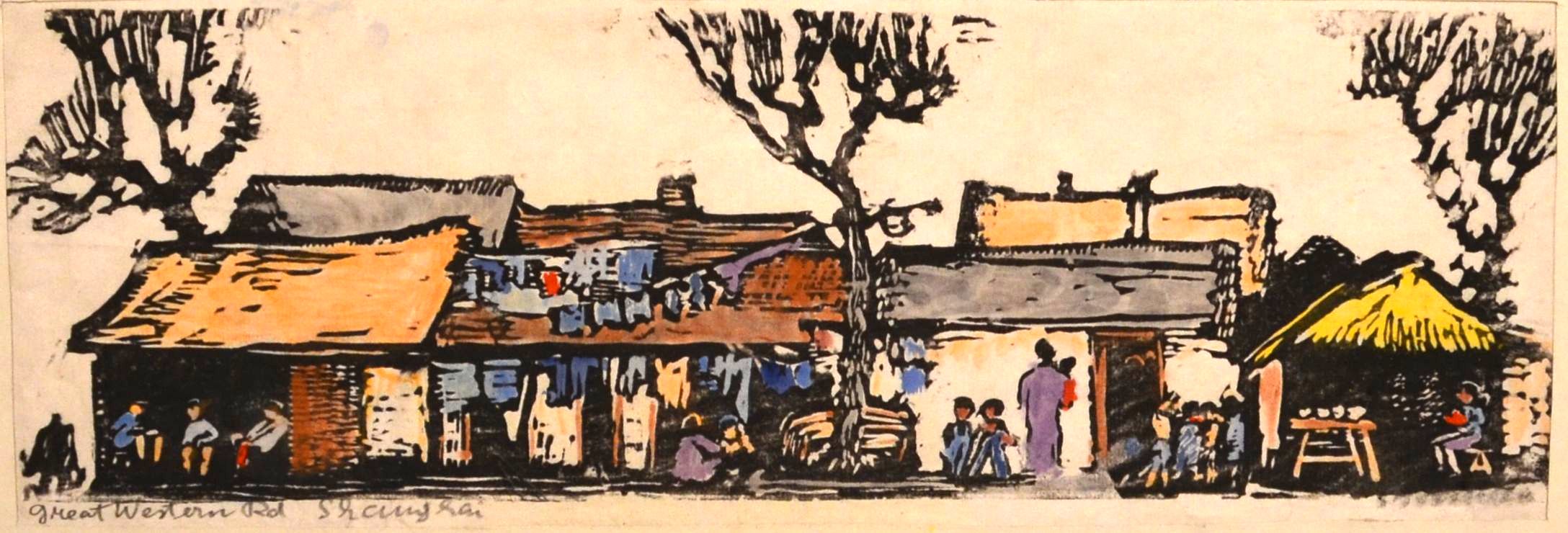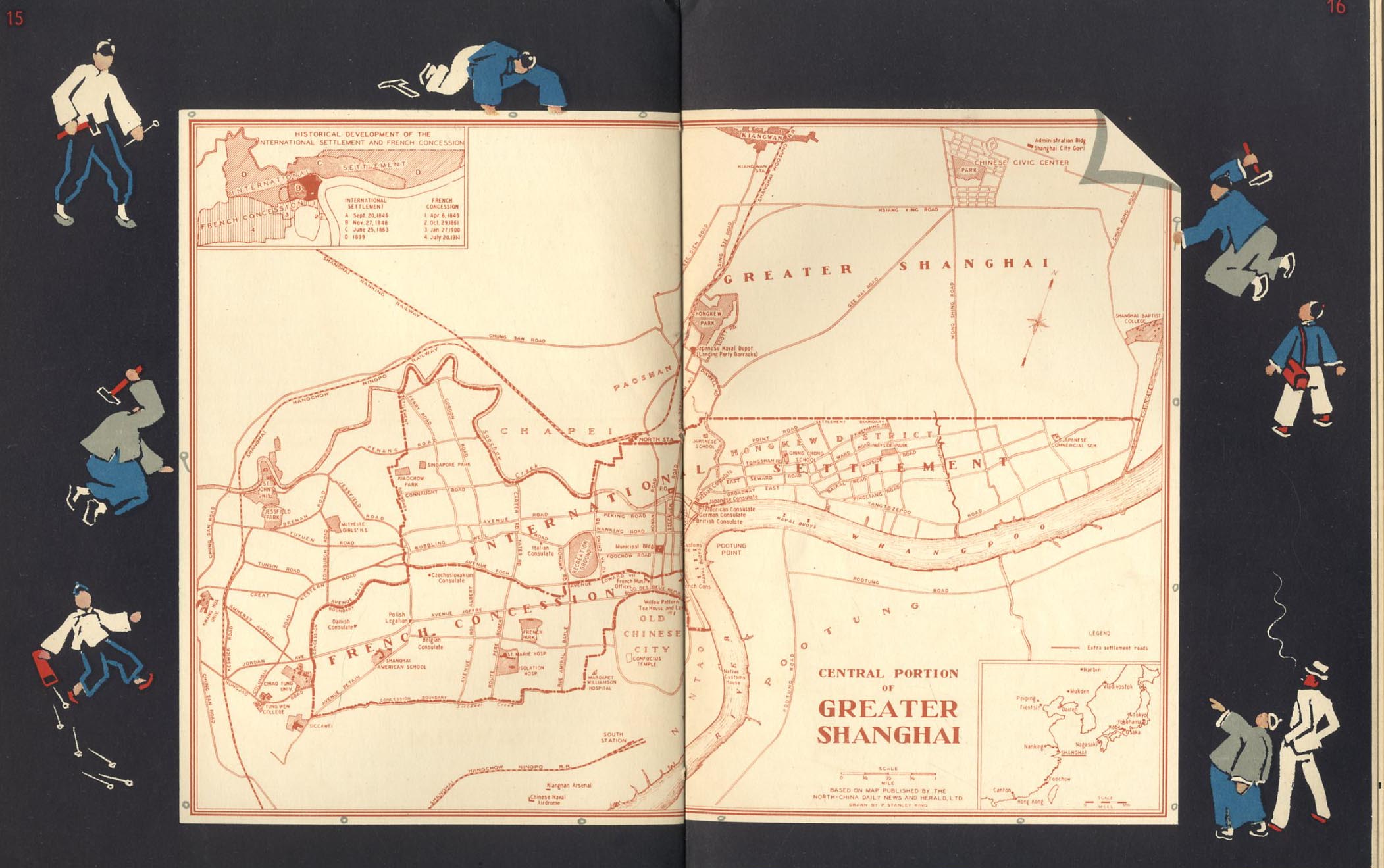Archive
https://archive.metromod.net/viewer.p/69/2952/object/5140-11786443
Archive
Hubertus Court
- Print
- Hubertus Court
Word Count: 2
- Emma Bormann
lino or wood cut
Hubertus Court, Avenue Edward VII, Western District Extension (now: Metropolo Jinjiang Hotels, 918–28 Yan’an Xi Lu, Changning Qu) Shanghai
- Shanghai (CN)
The print was made by the artist Emma Bormann during her exile in Shanghai in the 1940s.The title suggest that the print offers a bird’s eye view from the Hubertus Court building.
Word Count: 34

Emma Bormann, Hubertus Court, lino cut or wood cut, around 1940, Shanghai (© private collection). 
Emma Bormann, Deutsches Eck [German Corner], wood or lino cut, around 1949 (© private collection). 
Emma Bormann, Great Western Road, wood or lino cut, around 1940 (© private collection). 
Schiff, Friedrich and Ellen Thorbecke. Shanghai. North China Daily News & Herald Ltd., Shanghai, 1941. Johns, Andreas. The Art of Emma Bormann. Ariadne Press, 2016.
Kaminski, Gerd. Der Pinsel hinterlässt Spuren: Das Vermächtnis von Emma Bormann. ÖGCF, 2006.Word Count: 23
Very many thanks to the family of artist Emma Bormann who generously provided their knowledge and enabled the presence of Emma Bormann's art in the archive.
Word Count: 26
- Shanghai
- Mareike Hetschold. "Hubertus Court." METROMOD Archive, 2021, https://archive.metromod.net/viewer.p/69/2952/object/5140-11786443, last modified: 20-06-2021.
-
Hans JacobyArtistShanghai
Hans Jacoby fled in 1938 to the Netherlands, where he was interned by the Dutch government in Hook of Holland. He was able to leave the camp and arrived, together with his wife Emma Jacoby, in Shanghai in 1940 where he continued to work as an artist.
Word Count: 45
Emma BormannArtistShanghaiEmma Bormann was a pioneering artist and printmaker. Her oeuvre gives witness to her extensive travels around the globe and to the agility and versatility of her artistic rendering of the urban sites she encountered.
Word Count: 35
Richard PaulickArchitectDesignerShanghaiAfter studying with Hans Poelzig, Richard Paulick worked in Walter Gropius’s office and frequented the Bauhaus in Dessau before emigrating to Shanghai in 1933. After his return, he became an influential planner and architect in the GDR, from 1950 until his retirement
Word Count: 41
Ward Road Gaol; Tilanqiao PrisonBuildingShanghaiThe Ward Road Gaol (today Tilanqiao Prison) had space for 7000 prisoners.The rather small new extension for foreign prisoners designed by the architect Rudolf Hamburger consisted of two buildings and a pavilion for the guards.
Word Count: 35